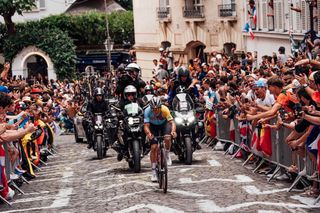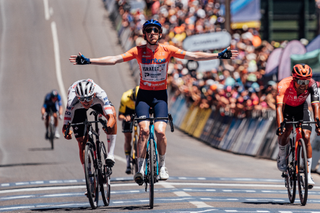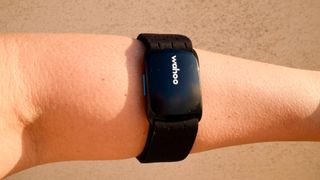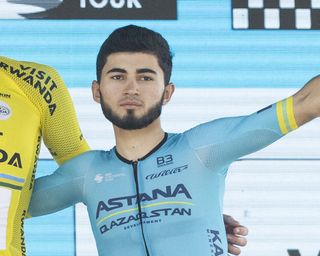Liège-Bastogne-Liège preview: Who Can Beat Valverde?
The challenges and challengers of La Doyenne





A day after he turns 35, Movistar’s veteran star Alejandro Valverde starts this Sunday’s Liège-Bastogne-Liège as the top contender. But as Philippe Gilbert (BMC Racing) discovered in the Amstel Gold Race last weekend, in the Ardennes Classics, the status of outstanding favourite can prove to be a two-edged weapon.
Back-to-back victories in Flèche Wallonne and two podium finishes in the last two years of Liège-Bastogne-Liège, as well as two victories back in 2006 and 2008, are all ample proof that Valverde has both the experience and the strength to take his third Doyenne this Sunday.
However, last weekend, just as Gilbert’s widely expected attack on the Cauberg in the Amstel Gold Race was the reference point for his rivals’ racing strategy, Valverde’s wheel will be the most popular one to follow in the Doyenne’s closing kilometres on Sunday.
Will that extra unwanted attention end up cramping Valverde’s style as badly as it affected Gilbert’s chances at Amstel? Or will Valverde be able to keep his rivals under control like he did in such impressive style on the Mur de Huy on Wednesday?
Liège-Bastogne-Liège’s multiple ascents and more unpredictable format certainly make that task much more difficult for the Spaniard - and it will be intriguing to see if the Murcia-born veteran can raise the bar in the Ardennes toughest Classic as effectively as he did in en route to victory at Flèche Wallonne last Wednesday.
Under normal circumstances, the home champion Philippe Gilbert (BMC Racing) would spearhead the challenge to Valverde’s expected domination. But Gilbert’s bad crash in Flèche Wallonne may see him in trouble on Sunday. A question mark also surrounds another former Liège winner, Dan Martin (Cannondale-Garmin), who had a nasty fall close to the Mur de Huy on Wednesday.
There are certainly plenty of other contenders, too. With Astana’s WorldTour licence worries now apparently behind them, leader Vincenzo NIbali may feel more motivated to bite down harder on the opposition than ‘the Shark of Messina’ did in his gutsy but unsustained attacks in both Amstel and Flèche Wallonne.
Equally, Michael Kwiatkowski (Etixx-Quick Step) may have failed to shine as brightly as he would have hoped in Flèche Wallonne. But the extra distance and more demanding course in Liège-Bastogne-Liège, in which he took third last year, could be more to the World Champion’s liking.
Yet another top challenger, Joaquim Rodriguez (Katusha), did not break through the radar in either Amstel or Flèche, but this is the first time in three years that Purito has raced Liège uninjured - and the doughty Catalan will be keen to chance to his arm in a race in which he has twice finished on the podium.
Exactly what strategy each of Valverde’s rivals, as well as el Bala [The Bullet] Valverde himself, will have planned for this brutally difficult Monument, the last major Spring Classic, will only be revealed on Sunday. But it’s worth remembering that rather than major long-distance attacks of the likes of Bernard Hinault’s, whose epic breakaway through the snow in the 1980 edition remains arguably the most emblematic victory of them all in La Doyenne, in recent years Liège has been fought out as a race of attrition.
Each climb of the ten that the race tackles this year will see the front group steadily losing units from the rear before final attacks go clear in the closing 30 kilometres. Come the finale, some top names will be completely isolated, others will have a few teammates as pawns or secondary pieces to try to make or break the race. With a week of fine weather forecast to break on Saturday or Sunday, heavy rain could make the Classic’s 4,000 metres of vertical climbing - as much as in an Alpine stage of the Tour - even more difficult.
Liège-Bastogne-Liège is also unusual for its structure. Whilst some Grand Tours are frequently likened to 21 days of Classic racing in three weeks, with Liège it is the other way around. Five key sets of ascents, most with ten or 20 kilometres between them make Liège-Bastogne-Liège like a week-long stage race within a Classic, with each challenge reducing the number of potential winners and plenty of room for ambushes on the ‘transition’ stages inbetween the 10 classified climbs.
The Wanne-Stockeu-Haut Levee trio of climbs begins the thinning out process. Then the Cote de la Redoute, the most emblematic climb of the entire race 34.5 kilometres from the finish, is where the favourites begin to test each others strength. Next up, the Cote de Roche aux Faucons has been the scene of some memorable last minute solo attacks - like Andy Schleck in 2009. Fourthly the steep, switchbacking curves of Saint-Nicolas form the last, and one of the most difficult, classified climbs.
Finally there is the long, sapping unclassified ascent to Ans. Never too steep and with riders visible on the two kilometre straightaway leading to the final left-hand bend, what the climb through the grimy backstreets of Liège lack in aesthetics, it continues to produce some gripping finales for cycing’s oldest Classic. This Sunday, hopefully, will be no exception.
Get The Leadout Newsletter
The latest race content, interviews, features, reviews and expert buying guides, direct to your inbox!
Alasdair Fotheringham has been reporting on cycling since 1991. He has covered every Tour de France since 1992 bar one, as well as numerous other bike races of all shapes and sizes, ranging from the Olympic Games in 2008 to the now sadly defunct Subida a Urkiola hill climb in Spain. As well as working for Cyclingnews, he has also written for The Independent, The Guardian, ProCycling, The Express and Reuters.
Most Popular
Latest on Cyclingnews
-
Tour de France could copy the Paris Olympics and spice up Champs-Elysées procession stage with hilly circuit around Montmartre
ASO submit file to Paris Police Prefecture for triple ascent of Montmartre hill to be included on Tour's final day, according to Le Parisien -
Men's Tour Down Under 2025 - Analysing the contenders
A close look at the favourites for the ochre jersey, as 2024 winner Williams to face stiff competition from Plapp, Vine and Onley young super talents -
Wahoo TICKR FIT armband review: Great for riders who don't like chest straps
An accurate, easy-to-wear heart rate monitor that crucially isn't a chest strap -
Astana Development Team rider handed four-year ban for CERA positives
Kazakhstani youngster Ilhan Dostiyev was caught by two tests as he finished second at Giro della Valle d'Aosta and won the Turul Romaniei



